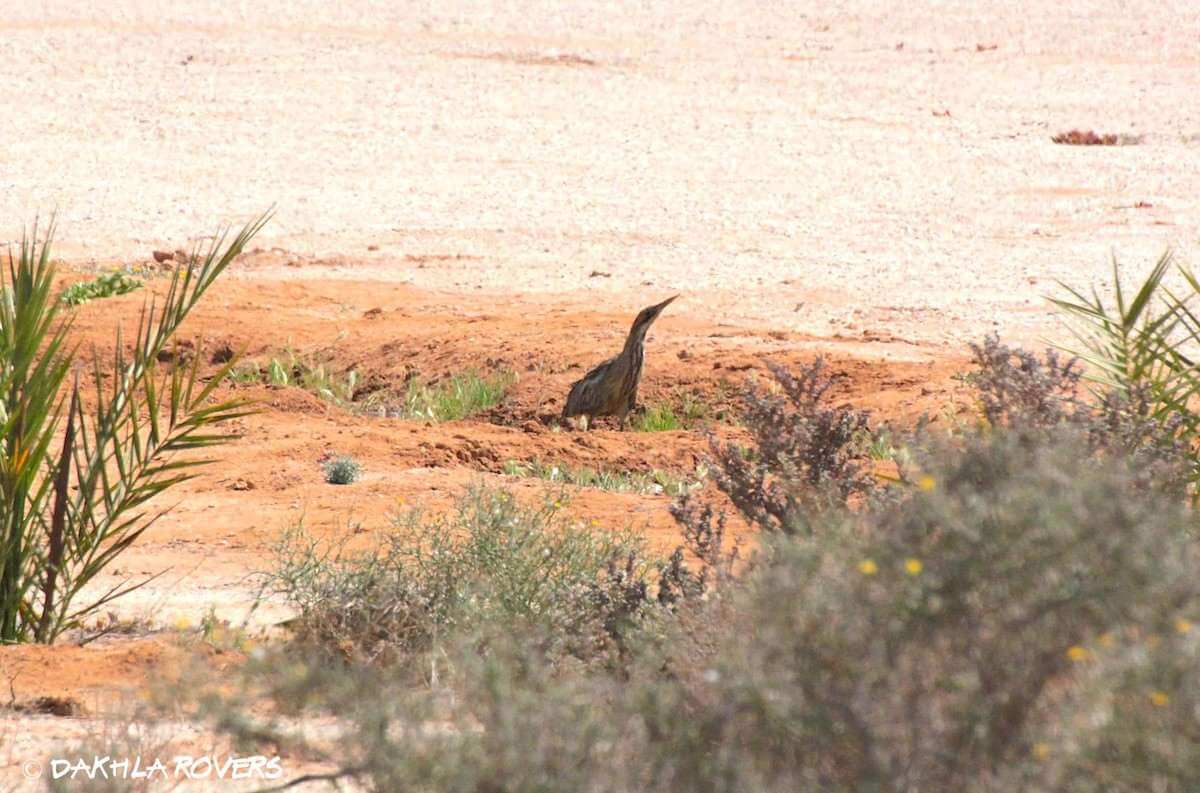On ne connaissait qu’une seule mention de Butor étoilé (Botaurus stellaris) pour le Sahara Atlantique (OSAM) : une femelle munie d’un émetteur satellite le 17 juin 2010 aux Pays-Bas a été localisée le 26 octobre suivant le long de la côte du Sahara Atlantique marocain puis au niveau de la frontière Mauritanie- Sénégal le 28 du même mois et, enfin, en Gambie le 5 novembre (NNSAM3). Le retour printanier de 2011 s’est fait à travers les zones intérieures de l’Oued Ad Deheb et de la Saquiat Al Hamra, puis à travers le Bas Draa (NNSAM4). Les observations de l’espèce sont rares en Mauritanie, mais pas exceptionnelles (Isenmann et al. 2010).
Nico (Dakhla Rovers), Chris Townend et les membres de Wise Birding Holidays ont eu la chance de photographier un oiseau à Mijk près de Dakhla le 27 mars : il s’agit donc de la deuxième mention au Sahara Atlantique mais de la première observation visuelle !
Ils ont également eu la possibilité de voir un Engoulevent doré (Caprimulgus eximius) près de l’Oued Jenna le 26 mars et signalent que la migration bat son plein dans la région de Dakhla, avec d’importants groupes de Guêpiers d’Europe et de Milan noirs.
Un grand merci à Franck Chevalier pour son autorisation d’accéder à la ferme de Mijk.
There was only one record of Eurasian Bittern (Botaurus stellaris) for the Atlantic Sahara (OSAM): a female equipped with a satellite transmitter on 17 June 2010 in the Netherlands was located on 26 October along the coast of the Moroccan Atlantic Sahara then at the Mauritania-Senegal border on 28 June 2010 and finally in Gambia on 5 November (NNSAM3). The spring return of 2011 took place through the interior of Oued Ad Deheb and Saquiat Al Hamra, then through the Lower Draa (NNSAM4). Observations of Eurasian Bittern are rare in Mauritania, but not exceptional (Isenmann et al. 2010).
Nico (Dakhla Rovers), Chris Townend and the members of Wise Birding Holidays had the chance to photograph a bird at Mijk near Dakhla on 27 March. This is the second record in the Atlantic Sahara but the first visual one !
They also had the opportunity to see a Golden Nightjar (Caprimulgus eximius) near Oued Jenna on 26 March and they report that migration is in full swing in the Dakhla area, with large groups of Bee-Eaters and Black Kites.
Many thanks to Franck Chevalier for his permission to access the Mijk farm.
Références
- (OSAM) Bergier, P., Thévenot, M. & Qninba, A. Oiseaux du Sahara Atlantique Marocain. SEOF, Paris, 359 pp.
- (NNSAM3) Bergier, P., Qninba, A. & Thévenot, M. Notes naturalistes au Sahara Atlantique marocain – 3. Go-South Bulletin 8: 67–103.
- (NNSAM4) Bergier, P., Thévenot, M. & Qninba, A. Notes naturalistes au Sahara Atlantique marocain – 4. Go-South Bulletin 9: 46–125.
- Isenmann, P., Benmergui, M., Browne, P., Ba, A.D., Diagana, C.H., Diawara, Y. & Ould Sidaty, Z.E.A. Oiseaux de Mauritanie. Birds of Mauritania. SEOF, Paris, 408 pp.

